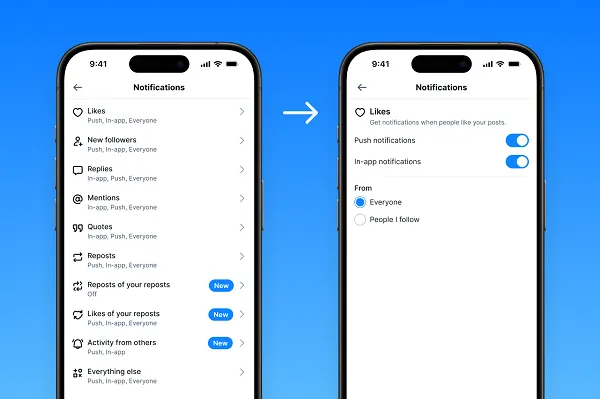7 ways ad agencies can market themselves better to win more clients
Experts offer tips for building your reputation with the press.

It’s the classic story of the shoemaker’s children: Ad agencies spend their days creating strategies and campaigns to market their clients, but have difficulty marketing themselves.
This can be especially true for small agencies, which are competing against holding company titans and a steady stream of new startups that are all vying for a limited pool of business. These shops don’t always have the budgets to hire inside or outside PR help, and are often constrained by clients who would prefer—for competitive or other reasons—not to have the work agencies do for them publicized.
But PR is critical to an agency’s success in a way that goes well beyond ego building, said Toni Lee, owner of Toni Lee Communications, on a panel at Ad Age’s Small Agency Conference in Atlanta last week. “PR has to have an impact on your business development goals. It has to support anything you are doing in new business. It has to connect you to your prospects. It has to reinforce to your existing clients what you stand for. It has to help you attract your best talent,” she said.
“You can’t afford not to be in the media,” said Fred Pfaff, president of Fred Pfaff Inc., who appeared on the panel with Lee. Pfaff noted that the No. 1 thing shared across social media aren’t TikTok videos, but accredited press stories. “And that holds especially true in a tougher time than in a boom time.”
Below are seven tips from the panel about how to win PR for your agency—big or small.
It’s not just about the work
“Everybody wants to get famous based on the work they do,” said Lee, but that’s not always possible. First, there are fewer outlets covering creative and today there is so much more work spread among so many different mediums that it makes the competition to gain press attention steeper every year.
But there are other ways to define work, said Pfaff. “Part of the work is your culture and what you are doing inside [your agency],” he said. “It’s the work you are doing inside, the interesting stories that actually make clients want to come work with you.”
Find the right place to tell your story
If given the choice, the agency rather than the client should take the lead in trying to disseminate a story, particularly if it’s about the work, both Lee and Pfaff said. In many cases, if a client disseminates the story, the agency is barely mentioned.
Pfaff said that if clients aren’t allowing press at all, there are other ways to tell your story. “You can put it on LinkedIn, you can put it on Facebook, you can get it out there in the world,” he said.
Lee said that while getting a story in Ad Age is important—“clients are reading it,” she said—there are other outlets available for agencies with press-shy clients. “As an agency, you have to be a marketer of yourself,” she said. “Do newsletters, in-depth LinkedIn posts, use pay-to-play outlets. Tell your stories in your own channels and really celebrate it.”
She also urged agencies to amplify their message by putting money behind a LinkedIn post.
Brian Bonilla, Ad Age’s senior reporter on the agency beat, said on the panel that while he receives 100 pitches from agencies in an average week, some of his best story ideas come from LinkedIn posts.
“A lot of times clients will say ‘No, you can’t do a press release on that, but you can put it on LinkedIn,’” said Lee. “Which is where Brian will find out about it.”
Think more broadly about press outlets
Lee said that often agencies will want to seed a story about their work specifically to the ad trade press, which can limit their options. Instead, she suggested shops think about more vertical trades. “You can target [beverage trades] if you’ve done a campaign that is really incredible in the beverage field,” she said. “You can target food marketers” in their dedicated publications, added Lee.
She also urged thinking differently about what really makes a story. Lee cited as an example her client OKRP, which counts among its clients Burger King, which wasn’t necessarily eager to promote the shop’s “Whopper, Whopper” campaign. But Lee noticed that the refrain was creeping into popular culture, with consumers creating takeoffs of the jingle. She collected many of them and pitched a piece not as about the ads themselves, but how they were influencing culture—which led to the reporter interviewing the agency.
Read more about the Burger King campaign here
Build relationships with reporters—and read what they’re writing
Pfaff said that there are too many agencies competing for a precious few minutes of a reporter’s time, so it’s best to build the relationship slowly and come prepared.
“Start with ‘What is it you are looking for?’” he advised. “Package it up and give them news they can use. A lot of times that will turn into—after you’ve done a couple of quality interactions with a reporter—they’ll start saying, ‘Hey, is so-and-so available?’” he said.
Lee said this only works if you make yourself intimately familiar with each publication you target. “You have to have a subscription,” she said. “It is incredible when I get an article for a client in Ad Age or whatever and they are like ‘There’s a paywall.’ I’m like, ‘You should have a subscription. You’re investing all this money here and you don’t have a subscription?”
Be flexible with timing
The panelists agreed that most journalists want exclusives, but too often they are offered with little advance notice. Bonilla said coming to him 24 hours before a press release isn’t enough time, given that he could be working on two to three stories already.
“If a reporter says, ‘I can’t get to it until next Thursday,’ I tell my client ‘We need to hold off until next Thursday,’” said Pfaff.
Stay on the radar
Even when agencies do not have a piece of work or news to promote, there are still ways to keep the shop top of mind. Lee suggests offering publications a piece of research on topics like Gen Z shopping trends. “There are columns, like ‘5 Lessons I’ve Learned,’ or ‘Here are things I do outside of work,’ or “These are things I am obsessed with,’” she said, or you can pitch a story on “How you did something to build a brand without using advertising.”
“I don’t like the term ‘thought leadership’ because a lot of our brethren kind of hacked it into meaning just opinionating, saying anything to get in the paper,” said Pfaff. “But if you truly have that leadership, you truly have the answer to an industry problem.”
Related: 20 brands resonating with Gen Z
Enter awards
Winning awards “makes your people feel really good about where they work,” said Lee. “It’s really a sense of pride. People notice. Clients notice. I think they are really invaluable.”
And the very act of applying for an award can help an agency shape their story, said Pfaff.
“When you go through the rigorous process of trying to tell your story in a succinct way that is going to win an award, you see the holes in your story,” said Pfaff. “You’ll see this is the part of the story that doesn’t hold together, because the hardest thing for an agency to do is put its superpower on its own account.”

 AbJimroe
AbJimroe 
































